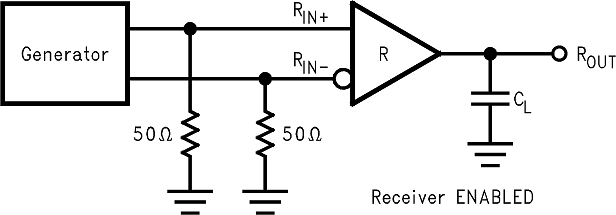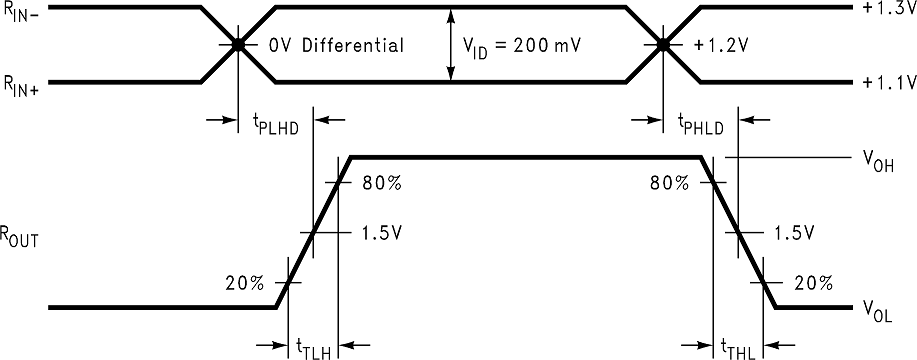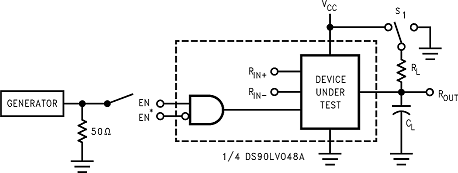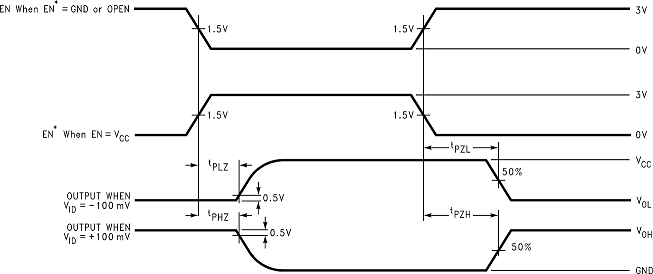SNLS045C July 1999 – July 2016 DS90LV048A
PRODUCTION DATA.
- 1 Features
- 2 Applications
- 3 Description
- 4 Revision History
- 5 Pin Configuration and Functions
- 6 Specifications
- 7 Parameter Measurement Information
- 8 Detailed Description
- 9 Application and Implementation
- 10Power Supply Recommendations
- 11Layout
- 12Device and Documentation Support
- 13Mechanical, Packaging, and Orderable Information
7 Parameter Measurement Information
 Figure 15. Receiver Propagation Delay and Transition Time Test Circuit
Figure 15. Receiver Propagation Delay and Transition Time Test Circuit
 Figure 16. Receiver Propagation Delay and Transition Time Waveforms
Figure 16. Receiver Propagation Delay and Transition Time Waveforms

CL includes load and test jig capacitance.
S1 = VCC for tPZL and tPLZ measurements.
S1 = GND for tPZH and tPHZ measurements.
Figure 17. Receiver TRI-STATE Delay Test Circuit
S1 = VCC for tPZL and tPLZ measurements.
S1 = GND for tPZH and tPHZ measurements.
 Figure 18. Receiver TRI-STATE Delay Waveforms
Figure 18. Receiver TRI-STATE Delay Waveforms